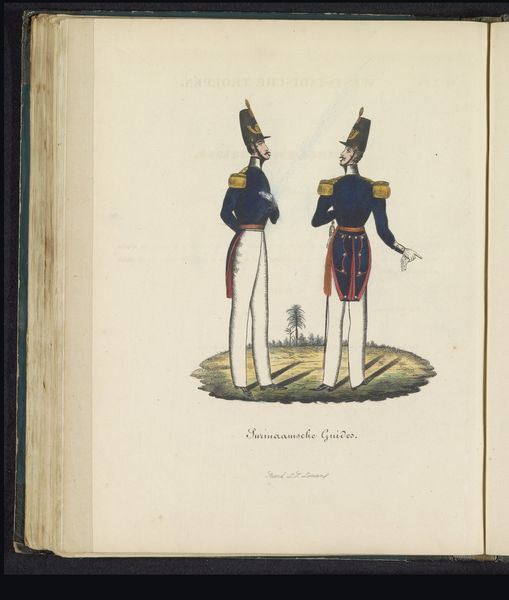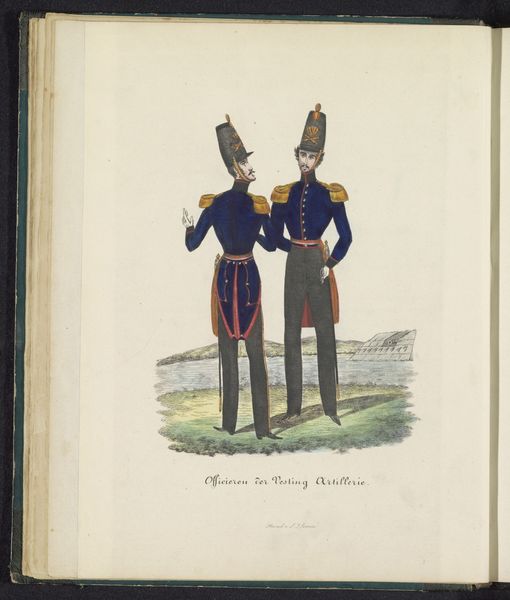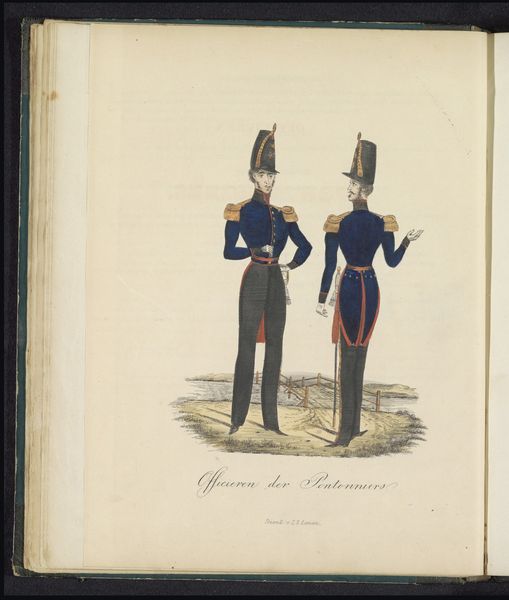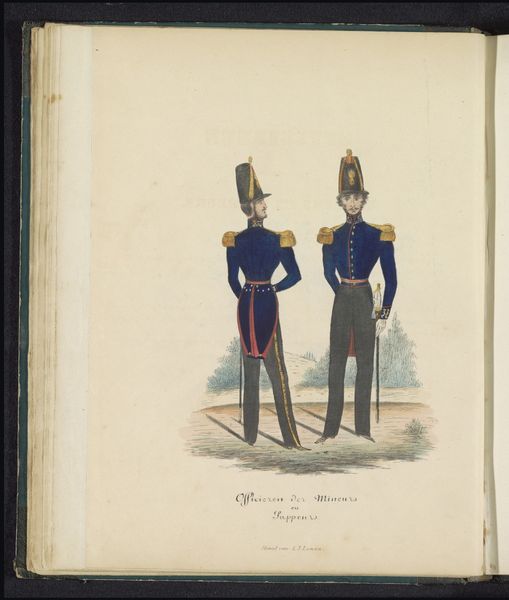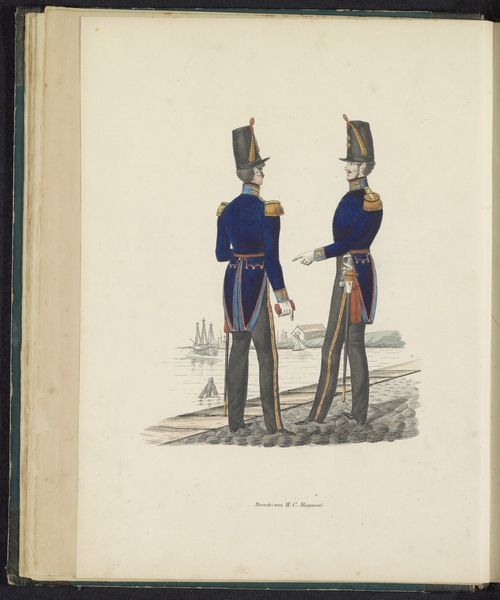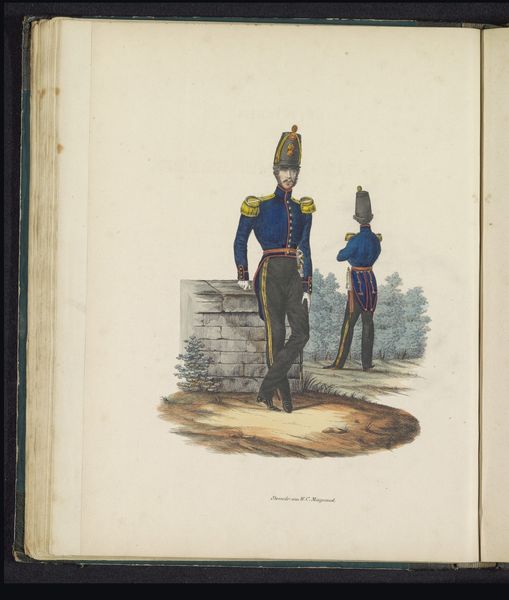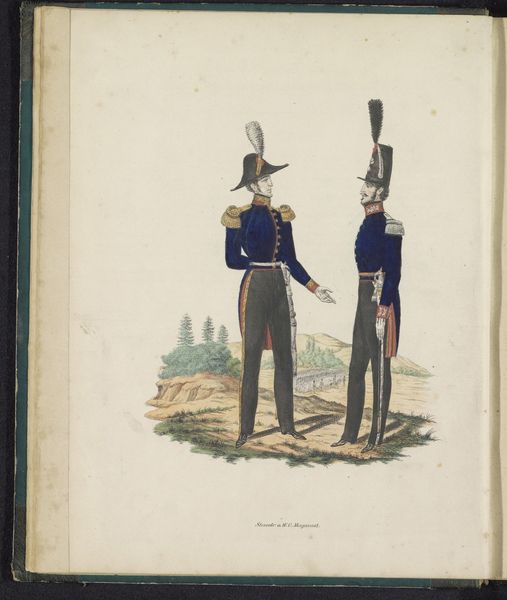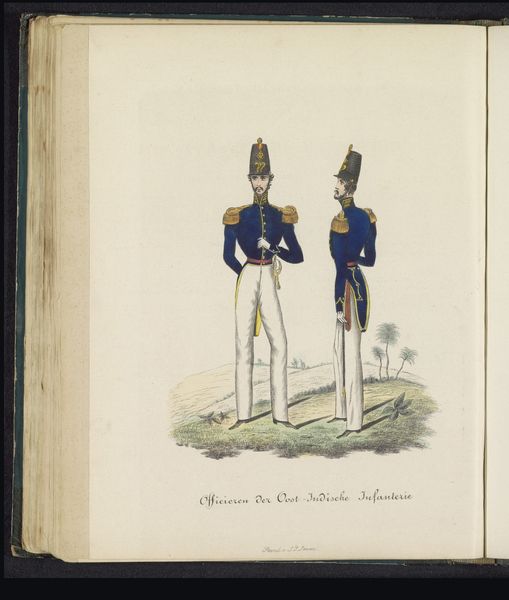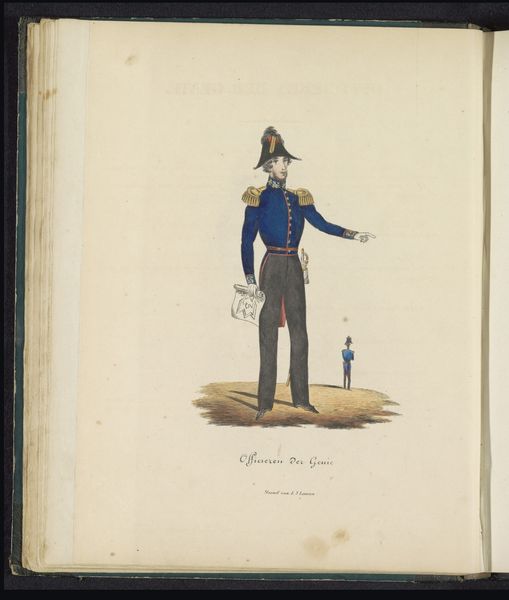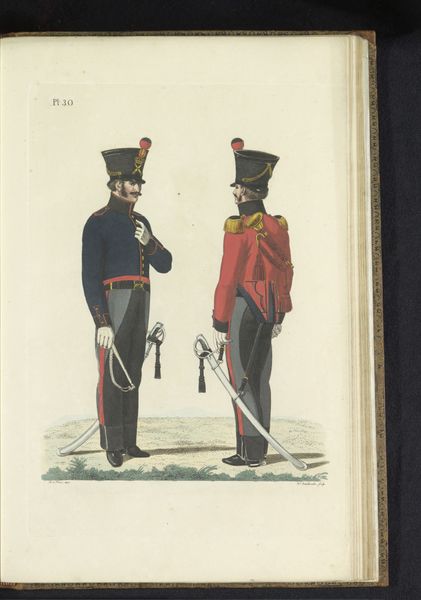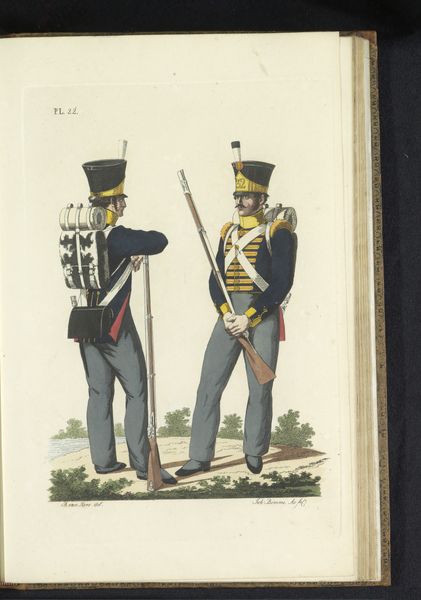
Uniforms for the White and Black Officers of the Militia Suriname (Paramaribo) of the West Indian troops, 1845 1845
0:00
0:00
drawing, watercolor
#
portrait
#
drawing
#
figuration
#
watercolor
#
coloured pencil
#
sketchbook drawing
#
watercolour bleed
#
watercolour illustration
#
history-painting
#
academic-art
Dimensions: height 270 mm, width 200 mm
Copyright: Rijks Museum: Open Domain
Curator: What strikes me first is the stark contrast—a poised elegance set against a rather unsettling historical backdrop. Editor: I agree. This watercolor, "Uniforms for the White and Black Officers of the Militia Suriname (Paramaribo) of the West Indian troops, 1845," created by Louis Salomon Leman, immediately begs the question: what power dynamics are subtly, or perhaps not so subtly, at play here? Curator: Exactly! Visually, we see the clear distinction through their attire, don't we? The plumes, the trim, the very posture – each a symbol of their ranked status and how they fit within the colonial hierarchy. One figure’s plume is vibrant red, suggesting passion, vigor or even aggression perhaps. While the other one has a yellow feather that can indicate friendship, and optimism, but at the same time betrayal or treason in certain cultures, which are rather charged symbols when juxtaposed like this. Editor: It’s a fascinating snapshot of a very specific moment in Surinamese history, capturing the structure of the colonial military in that place and time. These weren't just uniforms, were they? These were visual cues signaling an entire societal framework that dictated privilege and control. Curator: And we cannot forget the landscape behind the two men. Even this part of the image speaks volumes: their proximity to a basic hut, almost as a visual ownership claim. It reinforces the message that military strength means societal power. The whole composition evokes the complex visual grammar of colonial power. Editor: This artwork serves as a stark reminder. Uniforms aren’t just fabrics and tailoring; they’re statements of intent, power, and control in the complicated history of colonialism and how that power manifested visually. Curator: Agreed, looking closely helps us uncover and contemplate what they stood for – a very insightful view to how the military strength influenced that historical context. Editor: Absolutely. Analyzing a piece like this prompts deeper thought about historical inequalities and lingering effects that stay with us in many shapes today.
Comments
No comments
Be the first to comment and join the conversation on the ultimate creative platform.

